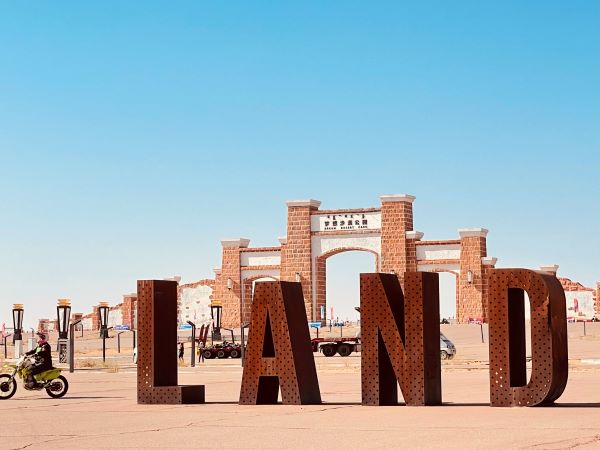Alshaa expands cultural tourism ties with Hulunbuir
- (goinnermongolia.com.cn)
- Updated: 2024-07-19

A camel train traverses desert in Alshaa. [Photo/WeChat account of Wenlyu Alshaa]
The new Alshaa Left Banner-Baotou-Hulunbuir air route, which is being operated by China Express Airlines, officially opened on July 2 – with the promise of bringing great positive change to the regions in North China's Inner Mongolia autonomous region.
The first flight, carrying 62 tourists, represented a landmark event for the region in that it reduced the previous travel time of two days by road to just four hours.
The new route, which is the longest within the region, is said to not only facilitate convenient travel but also enhances cultural and tourism cooperation between Alshaa and Hulunbuir city.
Alshaa and Hulunbuir – the largest administrative divisions in Inner Mongolia – are rich in tourism resources and historical culture. They share and complement each other's landscapes that feature deserts, grasslands, forests and lakes – as well as cultural heritage like the Juyan culture and ethnic minority crafts.
The new flight route is expected to significantly boost tourism, cultural exchanges, commerce and trade and the expansion of markets, showcasing a model of East-West collaboration within Inner Mongolia.
In anticipation of this, the cultural tourism departments of Alshaa and Hulunbuir signed cooperation agreements to strengthen their partnership.
In the wake of the accords, local travel agencies plan to form inspection groups to explore each other's tourism routes.
They also plan to increase tourist exchanges through charter flights, aiming to send over 5,000 tourists to each region annually.
Additionally, customized immersive and experiential tourism products will be developed, highlighting attractions like the Alshaa Desert Geopark and the Hulunbuir Grassland Marathon.
Regular promotional events will further foster the collaboration, promoting the unique natural and cultural landscapes of both regions.


